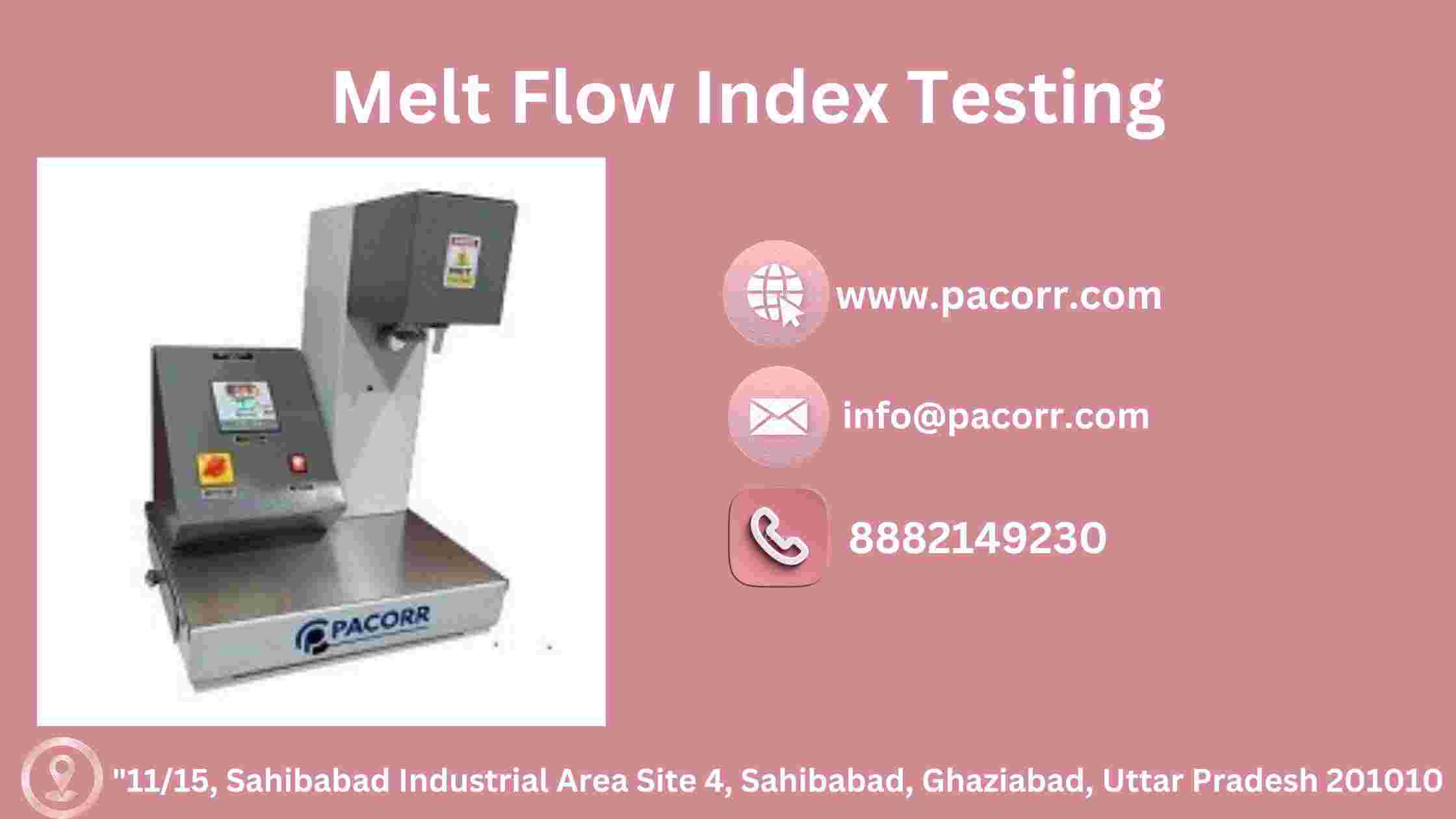Introduction
The Melt Flow Index (MFI) Tester is an essential tool in the polymer industry, providing critical data that helps manufacturers ensure the quality and consistency of their products. This article delves into the importance, working principles, and applications of the Melt Flow Index Tester, offering a comprehensive understanding of why this device is indispensable in polymer testing.
What is a Melt Flow Index Tester?
A Melt Flow Index Testing, also known as a Melt Flow Rate (MFR) tester, measures the rate at which a thermoplastic polymer flows under a specific load and temperature. The test results provide valuable insights into the material's viscosity and flow properties, which are crucial for determining its suitability for various applications.
Importance of Melt Flow Index Testing
- Quality Control: The MFI test ensures that the polymer material meets the required quality standards. By maintaining consistent flow properties, manufacturers can produce high-quality products with predictable performance characteristics.
- Process Optimization: Understanding the melt flow properties of a polymer helps in optimizing the processing parameters such as temperature and pressure during extrusion, injection molding, and other manufacturing processes.
- Material Selection: The MFI test aids in selecting the right polymer grade for specific applications. Different grades of polymers exhibit varying flow properties, and the MFI test helps in identifying the most suitable material.
- Cost Efficiency: By ensuring the right material is used and processes are optimized, manufacturers can reduce waste, improve production efficiency, and lower overall costs.
Working Principle of the Melt Flow Index Tester
The MFI test involves heating the polymer to a specified temperature, allowing it to melt, and then extruding it through a die under a standard load. The rate at which the polymer flows through the die is measured and reported as grams per 10 minutes (g/10 min). The test is performed under controlled conditions to ensure accuracy and repeatability.
Key Components of the Melt Flow Index Tester
- Heated Barrel: The polymer sample is placed in a heated barrel where it is melted.
- Piston and Load: A piston applies a specific load to the melted polymer, forcing it through the die.
- Die: A standardized die through which the polymer flows, providing a consistent measurement of flow rate.
- Timer: Measures the time taken for the polymer to flow through the die.
Testing Procedure
- Sample Preparation: A known quantity of the polymer sample is prepared and placed in the heated barrel.
- Melting: The sample is heated to the test temperature, ensuring it is fully melted.
- Loading: The piston applies the specified load to the melted polymer.
- Extrusion: The polymer is extruded through the die, and the flow rate is measured.
- Calculation: The mass of the extruded polymer is measured over a set period, and the MFI is calculated in g/10 min.
Applications of the Melt Flow Index Tester
- Polymer Manufacturing: Ensures the consistency and quality of polymer resins produced.
- Quality Assurance: Used by quality control laboratories to verify the properties of incoming raw materials and finished products.
- Research and Development: Assists in developing new polymer formulations and improving existing ones.
- Regulatory Compliance: Helps in meeting industry standards and regulatory requirements for polymer products.
Conclusion
The Melt Flow Index Teste is a vital instrument in the polymer industry, providing essential data that ensures the quality, consistency, and performance of polymer materials. By understanding the melt flow properties, manufacturers can optimize their processes, select the right materials, and ultimately deliver superior products to the market. Investing in a reliable Melt Flow Index Tester is crucial for any polymer manufacturer aiming to maintain high standards and achieve operational excellence.
Frequently Asked Questions (FAQ)
What is the Melt Flow Index?
The Melt Flow Index (MFI) is a measure of the rate at which a thermoplastic polymer flows under a specific load and temperature, expressed in grams per 10 minutes (g/10 min).
Why is Melt Flow Index testing important?
MFI testing is important for quality control, process optimization, material selection, and cost efficiency in polymer manufacturing.
How is the Melt Flow Index measured?
The MFI is measured by heating a polymer sample to a specified temperature, applying a standard load, and measuring the rate at which the polymer flows through a die.
What industries use Melt Flow Index Testers?
MFI Testers are used in polymer manufacturing, quality assurance, research and development, and for regulatory compliance in various industries.
Can the Melt Flow Index Test be performed on all polymers?
The MFI test is primarily used for thermoplastic polymers. It may not be suitable for thermosetting polymers due to their different flow properties.
How does the Melt Flow Index affect product quality?
A consistent Melt Flow Index Testing ensures that the polymer material has predictable flow properties, leading to uniformity in the final product's quality and performance.
By understanding and utilizing the capabilities of the Melt Flow Index Teste manufacturers can significantly enhance their production processes and ensure the highest quality of their polymer products.



